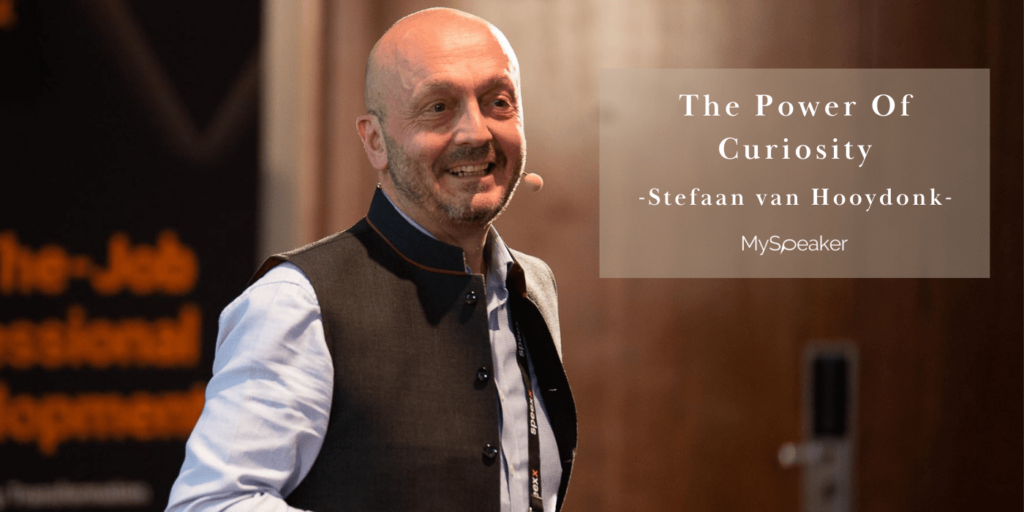Every person is born with a healthy dose of curiosity. Some people maintain this level through adulthood, many however see their original strength diminish over time. When counting the number of questions children ask, we arrive at an average of 75 questions. By the time these children become adolescents they ask on average 5-10 questions. In some groups it is cool to ask questions, in others not. By the time these adolescents get into the workforce, many have been conditioned to only ask functional questions: “what do I do to fit in?”, “What do I do to stay out of trouble.” and ‘What do I do to please my boss.” Some people have escaped this early conditioning and have remained highly curious. There are curious professionals, teams, and organizations, and then there are incurious ones. The curious ones benefit from high levels of openness and curiosity. They share a drive to action, an urge to explore the unknown, a hunger so big it overrides the desire for the coziness and conformity of their familiar world. Curious professionals are not only self-sufficient with curiosity, they are also dependent on role model leaders, corporate cultures, processes, and practices around them that allow them to leave the beaten path, take the roads less known and show up curiously. Curious companies and managers intentionally look for curious professionals to join their teams.
{first ten-digit prime found in consecutive digits of e}.com
A good engineer is someone who thrives on finding and solving difficult problems. Yet, how does one recruit the best of the best in a market where it is hard to tell good from average engineers, and where there are more job openings than engineers to fill them? The recruiting team at Google in Silicon Valley were asking themselves these specific questions. They needed to come up with something new, a new approach to recruit the best of the best. To recruit the best—the most curious and problem-solving— engineers, they had to think of a radically new recruitment strategy. What they did was startling: they booked a large billboard on Highway 101 in Silicon Valley to display only this simple text: {first ten-digit prime found in consecutive digits of e}.com The billboard had no company listed. Only those who were curious and driven enough to find an answer to this puzzle would find themselves accessing the following URL: 7427466391.com. Once they accessed the site, they would see yet another puzzle. Once they solved this second puzzle, they would get an invitation to fast track their application to problem-solver@google.com.Google’s example is one of 2004. Fast tracking to 2022, a recent LinkedIn survey found that for online job adverts, there is an increase of 90% of the use of the word ‘curiosity’. The corporate world has clearly woken up to the idea that workplace curiosity is important in positioning themselves as curious workplaces.“The corporate world has clearly woken up to the idea that workplace curiosity is important in positioning themselves as curious workplaces.”
Traditional organizations frame curiosity as the opposite of efficiency
This does not mean that all recruiters are overly fond of high levels of curiosity in their candidates. In a workshop the Global Curiosity Institute held in Brazil for high potential professionals, a number of them mentioned that recruiters had reacted negatively when the candidates described themselves as curious. The reason for this negative reaction is as follows:- In many cultures, curiosity can have a negative connotation in popular language. For instance, in the polish language for instance, the phrase: “Curiosity is the first step to hell.” describes this sentiment well.
- A negative connotation of curiosity in mature companies. Early start-ups often have a high predisposition to exploration, only to see that this mindset deteriorates once the company expands, focuses on efficiency, conforms to rigid standards, and finds it harder to learn from mistakes. The opposite of curiosity is conformity.
Balancing conformity and curiosity
In conformist seeking environments, the definition of curiosity tends to be one of idle ideation without results, curious individuals being difficult to manage and curiosity being a distractor for efficiency and focus on the team.There is nothing wrong with conformity per se and companies like Eastman-Kodak have proven that they could lead their industry for 100 years with only minor changes in their business process. Also, conformity to quality standards, guidelines and processes ensures the continuation of business operations and customer satisfaction. Unlike in the 20th century, however, companies nowadays cannot solely focus on efficiency and perpetuate the past, simply because when the environment changes, customer needs evolve, the competitive landscape transforms, companies need to embrace equally the unknown future as well as the past. We all know what happened to Eastman-Kodak when their industry started changing and digital photography started to emerge.“Companies need to embrace equally the unknown future as well as the past.”
Defining curiosity
Curiosity hides many shades of truth and is far more sophisticated than descriptions in scientific articles, business books and media stories. Curiosity is one of those words we use loosely in everyday life and often linked to intellectual curiosity, namely the recognition and desire to seek out new knowledge and information, and the subsequent joy of learning and growing. When reflecting on curiosity, we can observe two additional aspects of curiosity: our interest in the people around us (empathic curiosity) and our desire to understand our inner selves: our values, our purpose, our deeper (limiting) beliefs. (self-reflective curiosity). Curiosity about the world leads to innovation, curiosity about others leads to empathy and curiosity about our deeper selves leads to resilience, groundedness and a feeling of balance and wellness. My definition of curiosity is the following. It is designed so it both encompasses individuals, teams and organizations. “Curiosity is the mindset to challenge the status quo, to explore, discover and learn. “
Benefits of curiosity
In times of volatility, companies need curious individuals to help their business thrive. Indeed, the relevance to modern organizations of curious employees is apparent: curious employees are responding better to fast-changing environments in the modern workplace by learning faster and by being more intrigued than frustrated when trying to proactively understand the changes affecting them. They are keen to extract the unique value of new situations, colleagues, and technologies and are more flexible in dealing with unfamiliar cultures in global settings and dealing more easily with uncertainty. As for improving work performance, curious employees are more apt to proactively seek feedback, ask open-ended questions during the acquisition of feedback, and effectively cope with ambivalent feedback from coworkers and supervisors.Best practice case
Merck KGaA, Darmstadt, Germany has changed their employer value proposition branding in 2017 from “make great things happen” to “bring your curiosity to life”. Henriette Fink, an employer branding specialist at the company’s headquarters in Darmstadt, and her colleagues found in their ongoing research that the old brand promise was not differentiating enough. According to Ms. Fink: “Everybody in the industry is using the same words such as innovation, collaboration, or change.” According to her, the biggest impact since the change of their employer branding was raising the awareness of Merck KGaA, Darmstadt, Germany as a good company to work with. More importantly, the focus on curiosity has resulted in the company being viewed as positively different from its industry peers. Both the quantity and quality of applicants has improved significantly at above-industry standards. Interestingly, Ms. Fink has found that curiosity is not linked to the younger demographics, but to all age groups. This in comparison to concepts like sustainability and purpose, which resonates more with the younger generation of employees. The company has not only changed its key messaging on their corporate website, but recruiters have also been trained extensively on talking about curiosity and have online tools at their disposal to keep curiosity on the forefront. They are also encouraged to gauge the curiosity level of candidates.“The focus on curiosity has resulted in the company being viewed as positively different from its industry peers.”
Curious organisations are winning organisations
Curious companies are intentional about how they balance curiosity and conformity. They are intentional about recruiting curious professionals and leaders and have designed processes to ensure curiosity is front-and-centre in their employee value proposition, assessments, job advertisements and interview processes. They are aware of the status quo and where they want to go, they are intentional about employing curious employees and in creating the right culture and climate for these curious professionals to thrive and grow. Furthermore, they baseline and measure curiosity in their candidates and employees, in their engagement surveys, in their innovation roadmaps and beyond.This article was written by Stefaan van Hooydonk, Founder of the Global curiosity Institute, Author of the workplace Curiosity Manifesto Read more about Stefaan! Footnote: if you are curious about curiosity or if you want to measure your curiosity level, visit www.globalcuriosityinstitute.com for more information.
